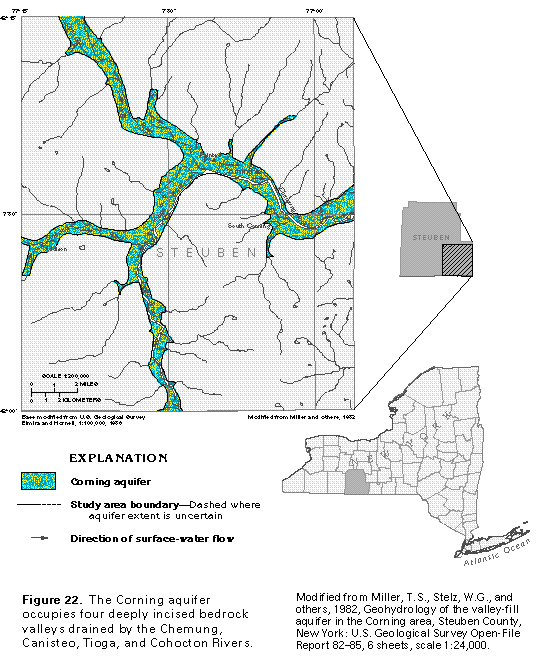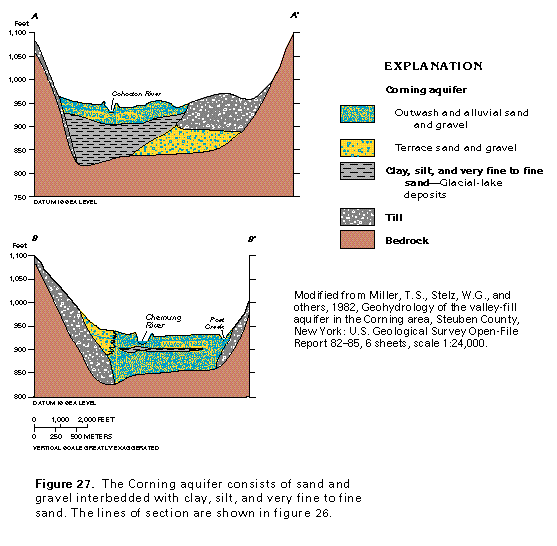The Corning Aquifer: An example of an excellent valley fill aquifer is the Corning Aquifer, located near Corning, New York. Estimated yields of wells completed in the Corning aquifer range from about 50 to about 1,000 gallons per minute
The Corning area is located in the Appalachian Plateaus Province of southwestern New York. Bedrock underlying the area is flat-lying shale, limestone, siltstone, and sandstone that was deeply eroded by preglacial drainage. Preglacial erosion was enhanced by glacial scour that broadened and deepened the valleys and rounded off the hill tops (fig. 23). Till was deposited as a veneer on the hill tops and valley walls during advances of the glacial ice. When the glacial ice melted, the bedrock valleys became the resting place for stagnating ice and were the natural drainageways for meltwater that deposited ice-contact and outwash deposits, which consisted primarily of sand and gravel during peak ice-melting periods, and glacial-lake deposits, which consisted primarily of clay, silt, and very fine to fine sand during quiescent periods.

